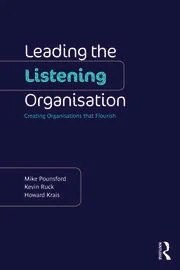Is it time to retire the annual employee survey and really listen?
Digital platforms are making it easier for employees to express their views but are internal comms professionals hearing what they’re saying?
When it comes to listening to employees, most organisations turn first to the large-scale survey as the method of choice.
It’s been around for a very long time and has its place. Although the shortcomings are well-established, including issues with delays in data analysis and feedback or action.
Research conducted for the recently published book Leading the Listening Organisation, that I co-authored, found that employees are more comfortable speaking up on digital platforms than in other settings such as surveys and focus groups. However, the same research reported that nearly one-third of organisations rarely or never use internal digital platforms as a way of hearing from employees and 58% rarely or never monitor forum discussions.
The potential use of internal digital platforms for hearing employees’ concerns and ideas is significant but can (or should) we wean organisations off the annual survey?
Although external platforms for employee and customer feedback such as Glasshouse and Trustpilot are well-established, internal digital listening is a relatively new phenomenon.
Broadcast vs collaboration
Indeed, internal digital platforms are still primarily used as broadcast channels rather than collaborative tools that include listening. When they are used for listening, they tend to be bolted on to activities linked to town halls or other events where employees ask questions and interact via chat.
In the chapter in the book that I wrote on digital listening, a range of benefits are described that are directly associated with listening (and responding) to employee discussions on digital platforms. These include the creation of new products and services, the generation of good ideas on how to work effectively, and improvements to customer service. In an uncertain economic climate, these outcomes are highly desirable for any organisation.
As organisations increasingly use automation and artificial intelligence internally, digital platforms will no doubt evolve and incorporate greater listening capabilities. They represent a significant opportunity both for employees to be able to express their views and for organisations to learn from employees.
In particular, I envisage far more advanced use of natural language processing (NLP) which will enable organisations to better detect themes being raised in online discussions. With these developments, there is also the potential for gathering data about thoughts and feelings that will require transparency from the organisation and agreement from employees.
Combining some of the skills involved in the analysis of big data with new listening tools provides the opportunity to gain deeper insights into business challenges. This can be used to identify quality or service problems and effective management work styles.
Challenging data
Advanced digital listening enables organisations to listen continuously and to anticipate and predict challenges. One of the challenges that practitioners tell me about is the large amount of data (for example, forum posts) that they could be analysing – if they had the time and resources to help them do so.
The task to take thousands of verbatim comments from surveys or to harvest employee comments from digital tools and to analyse these almost immediately is new and AI tools will speed up analysis of sentiment even more.
The use of AI for listening to employees has much to offer in terms of descriptive analytics that help managers and leaders to make sense of what employees are saying that is then part of a process that includes responding and/or acting. However, it is important not to over-rely on a single data source or analysis process to ensure that multiple levels are brought together to generate deep insights.
And organisations do, of course, have to be fully transparent about what employee data is being mined; otherwise, employees will simply not trust the process and withdraw into silence.
 Kevin Ruck is the co-founder of PR Academy, which delivers a range of CIPR-certified courses. His book, Leading the Listening Organisation: Creating Organisations that Flourish, is out now, published by Routledge.
Kevin Ruck is the co-founder of PR Academy, which delivers a range of CIPR-certified courses. His book, Leading the Listening Organisation: Creating Organisations that Flourish, is out now, published by Routledge.
Kevin and his co-authors Mike Pounsford and Howard Kraise will share outcomes of their six-year research project into listening to employees and cover key areas from the book at the CIPR Inside Summit on Tuesday 19 March. Book your tickets now.
